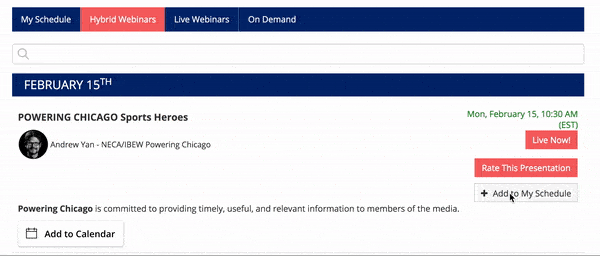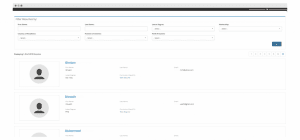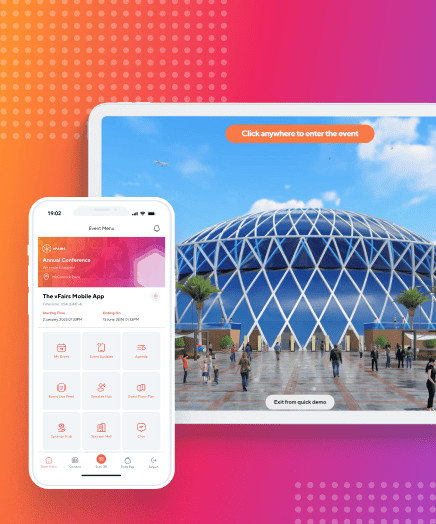The biggest challenge you’ll face hosting a virtual event, after audience engagement, is audience interaction. But that shouldn’t stop you from hosting your first ever virtual life science conference.
After helping organizations like IEEE, University of Washington, and Cambridge Education Group host successful virtual conferences, we can share, with confidence, a few tricks up our sleeve that are sure to make your virtual conference a massive success.
Timing Your Virtual Conference
One of the best things about a virtual conference is that it’s delocalized. Attendees from anywhere can join without having to worry about leaving their cities or buying pricey plane tickets.
Yet, this is also something that poses a major problem for the hosts. Your virtual life science conference should consider time zones of all attendees when scheduling your conference.
One way of addressing this issue and avoiding any confusion among attendees is to share the conference schedule in their respective time zones.
Even then, it’s hard for attendees to participate in all activities, especially in conferences that host numerous webinars and presentations. In such instances, attendees can build their own personalized agendas and access their selected webinars/presentations in the “My Schedule” tab within the virtual auditorium.

Participants can also add reminders to their personal calendars so they’re reminded about the presentations they don’t want to risk missing.
Even if everything goes as planned, attendees can still miss live sessions owing to various reasons, the most common being a faulty internet connection. To cater to such cases, conferences need to record their live webinars and publish them for people to access to review anytime afterward.
Format for Maximum Engagement
We mentioned at the start that audience engagement is one of the biggest challenges that virtual conferences face. But that can be countered through clear goal setting, planning, and scheduling.
Virtual conferences need to be much more than a few presenters sharing their research. It has to have a clear goal, and content curated specifically for that goal.
You should be clear about what you want to offer your attendees. And how that aligns with your goals. Once you know the kind of audience you want at your event, you are in a better position to offer them content that’s interesting and valuable.
But creating interesting content is not enough, the production quality should be off the charts if you want maximum engagement. Offer more on-demand content to allow attendees to watch at their own time.
Provide Networking Opportunities
Physical conferences provide numerous networking opportunities. And a successful virtual life science conference should do the same. But it gets a bit tricky with digital conferences as there are no refreshments tables where you’ll bump into someone and start a productive discussion.
Having said that, there are features available that allow for high-quality networking in a virtual setting.
For example, attendees and sponsors/exhibitors are able to search through attendee profiles that they can filter based on criteria like field of expertise, job title, company name, etc. This enables people to reach out to others matching their criteria and start meaningful conversations.

During webinars, presenters should encourage attendees to ask questions. Q&A sessions also offer room for healthy discussions and provide a space for participants to interact with the presenters. Breakotus, one-on-one conversations, and happy hours can be scheduled to provide networking opportunities between attendees.
Games also provide excellent networking opportunities. Leverage the interactive traits of trivia quizzes, scavenger hunts, and other fun and engaging activities.
Provide Customer Support
The prevalence of technology has made most of us tech savvy, but that doesn’t mean your attendees won’t run into problems. That’s why technical support is of crucial importance; be it in the planning stage, during the conference, or after it. Even if you might not need it, it is a great stress reducer, allowing you to focus on more pressing matters.
But the problems won’t necessarily be of technical nature. Navigational problems and confusion regarding event timings are just a couple of non-technical issues attendees run into.

You’ll need an easy to navigate virtual lobby that has links to various events. To avoid confusion regarding schedule, prompt attendees through emails including information regarding event timings, where to access them, and when/how to download them for future viewing.
You should also provide customer support information on your virtual life science conference website and email attendees of all the support options available.
Request Feedback And Study Insights
The importance of feedback cannot be overstated.
Request attendee feedback while concluding your conference. Were there any issues or inconveniences that could be avoided in future events?
But there’s more to feedback than just thoughts of your attendees and participants.
Numbers don’t lie. And that is exactly why we provide valuable insights including (but not limited to) number of registrations, number of attendees, and engagement metrics.
When you know what kind of webinars interested most people; what kind of content they downloaded; their navigation trends; and similar information, you get to know what works, what doesn’t, and what could be improved. Such insights provide a clear roadmap for the success of future virtual conferences.
Some Other Tips
As they say, it’s the little things that make the most difference. So, if you want your virtual life science conference to go perfect, consider doing the following:
Give time to the presenters
While scheduling, don’t forget to allocate time to the presenters to familiarize themselves with the virtual conference platform – a month, at least. So that they have enough time to pre-record presentations in their own time.
Assign session moderators
Moderators need to let attendees in the meeting, assisting presenters and introducing them, coordinating with event organizers, promoting and guiding discussion, managing chat rooms, etc.
It’s better to have more than one moderator per session to divide the tasks and to have extra moderator/s in case one of them runs into any issues (e.g. the internet’s not working).
Practice
You don’t know what’s going to happen during the event. Even after all the planning and detailed guides and instructions, there’s room for error. Practicing at least once before the actual event gives a lot of insight into what the actual event is going to look like. And what issues might you run into.
Project managers should offer technical run-throughs to the presenters the day before the event so that they can familiarize themselves with the process and platform.
Having done that, planning for such issues (technical or otherwise), beforehand, becomes possible. So, the actual conference can be as perfect as can be.
In the end, have fun
Hosting a virtual life science conference can seem intimidating considering the global reach, various technical aspects, and time differences. But it doesn’t have it be, especially if you have a team of professionals that are dedicated towards a single cause.
Start planning and reach out. Let’s make your first virtual life science conference a memorable experience for both you and your attendees.


